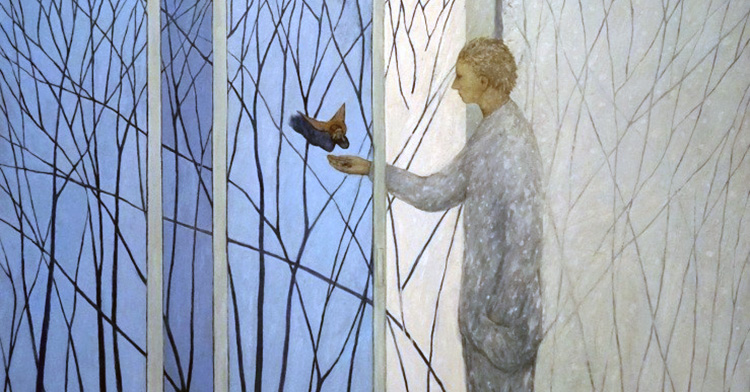On a recent vacation to the Outer Banks of North Carolina, three generations of my family shared an excursion. We chartered a water taxi to an undeveloped island known for its wild ponies and abundant seashells.
That morning I learned something about the art of shelling from my mother. We were attracted to very different shells. I collected only those shells whose beauty could be easily recognized -- shells with vibrant colors, smooth contours, no cracks or chips. My mother, on the other hand, found beauty in almost every shell she came across. She was especially drawn to those that were -- to my eyes -- less than beautiful. Shells with cracks, crevices, and weathered patinas of gray and brown -- these were the ones she chose to keep.
As I surveyed her odd collection, I was reminded of wabi sabi -- the counterintuitive ideal of Japanese aesthetics.
The word wabi connotes the artful anomalies -- the uneven lines, the crooked timbers -- that arise from the process of natural construction. Sabi suggests the unexpected beauty of decay -- the frayed edges, the earthy patinas that come with age. Together, these two expressions point to the common condition of all living things. Finite. Frayed. And far from perfect.
In his book “Wabi Sabi: The Japanese Art of Impermanence,” Andrew Juniper describes this aesthetic ideal as “an understated beauty that exists in the modest, rustic, imperfect, or even decayed.” “Wabi sabi,” writes Juniper, “finds a melancholic beauty in the impermanence of all things.” Though I doubt my mother would describe it as wabi sabi, I think this is what attracted her to the shells she chose to keep.
As followers of Christ, it’s worth pondering what we consider beautiful. I don’t have any expertise in Zen aesthetics, and no one has ever confused me with an artist. Yet still I wonder where Christian faith and Zen aesthetics might intersect. Like our Zen kindred, we too enjoy an aesthetic irony. Yet we are on a different track. Wabi sabi is the awareness that all things evolve from nothing and eventually return to nothing. Christians can agree with the first part. God creates ex nihilo, out of nothing. But our Creator God does so for the purposes of love and with the goal of redemption. Irony in Christian aesthetics is thus tempered with eschatological hope in the ultimate renewal of all that is presently fading away.
And yet something akin to wabi sabi seems apparent in Christian faith. You can hear it in the stories we tell one another -- stories filled with the modest and the homely, with rough-hewn images of grace. A simple manger. An old rugged cross. A crust of bread beside homemade wine. We share the stories of Jesus, who embraced the sick mottled with diseases and dined with the sinful marred by moral failure. The message in all these stories is that these are the “created things” that catch God’s eye. God is drawn to them as my mother was drawn to a certain kind of shell.
What does all this mean for the pastor? I have come to believe that one of our most important tasks is to cultivate communities that practice ironic aesthetics. To put it another way, we do not just put up with -- but actively celebrate -- that which is far from perfect. We celebrate the Vacation Bible School craft, not in spite of its uneven proportions, but because its imperfections reveal the initial, shaky steps of a child learning to follow Jesus. We honor imperfect relationships as old friends in Christ who have both supported and disappointed one another through the years. We find beauty in a children’s nativity -- sleepy-eyed Josephs and angels with tinfoil halos alongside bathrobed shepherds. We can even find some pleasing form in yet another dysfunctional committee meeting where members volley back and forth over painting some door red or blue.
Most of all, we practice a kind of wabi sabi in our role as worship leaders. We help the gathered remember that God -- the One who loves the uneven and unexpected -- is the audience of our worship. And so we strive to be patient with flat notes from the choir and flat sermons from the preacher.
As a young pastor, I often missed these opportunities. I found the many imperfections of Christian community grating. I recall wishing that I could lead an organization that pursues excellence in a less qualified way. Now I think churches simply pursue a different breed of excellence. Once, that would have sounded like a cop-out. Now I believe that while there may be a fine line between complacency and wabi sabi, the line is there.
As a pastor, I’m called to walk that line each week and then to invite others to join me. We are moving on to perfection. That’s true. But along the way we may discern God’s grace imbedded in the peculiar beauty of the imperfect.














